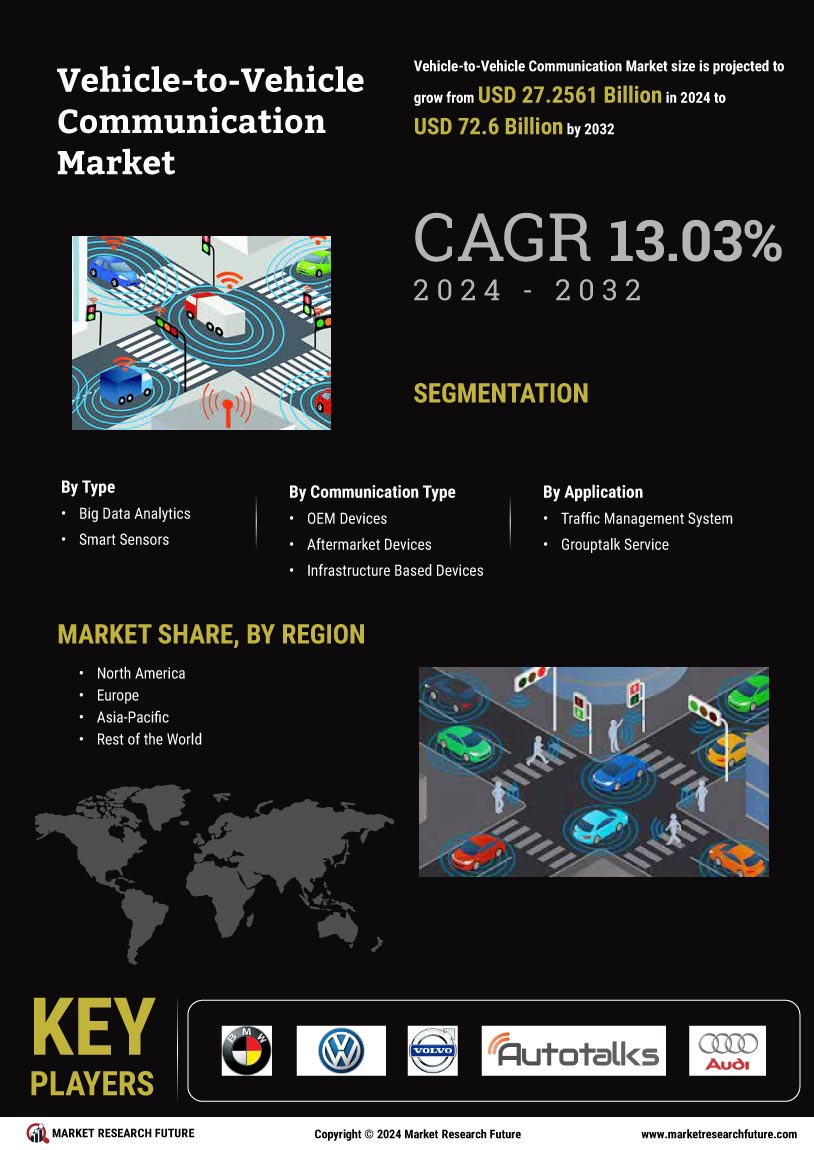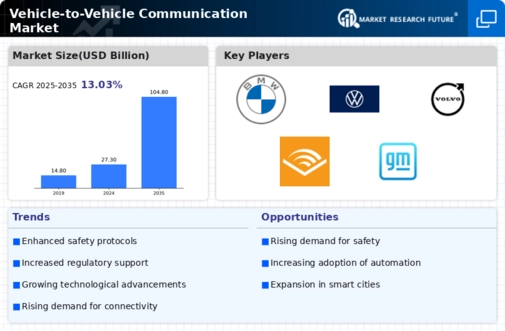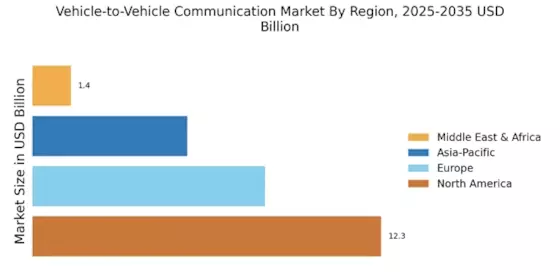Technological Advancements
Technological advancements play a pivotal role in the growth of the Vehicle-to-Vehicle Communication Market. Innovations in communication protocols, such as Dedicated Short-Range Communications (DSRC) and Cellular Vehicle-to-Everything (C-V2X), are enhancing the capabilities of V2V systems. These technologies enable vehicles to exchange information in real-time, improving situational awareness and decision-making. The integration of artificial intelligence and machine learning further augments the functionality of V2V communication, allowing for predictive analytics and improved traffic management. As these technologies evolve, the market is expected to expand, with projections indicating a potential market size exceeding USD 10 billion by 2030. This growth underscores the importance of continuous technological development in the Vehicle-to-Vehicle Communication Market.
Enhanced Safety Regulations
The Vehicle-to-Vehicle Communication Market is experiencing a surge in demand due to the implementation of enhanced safety regulations. Governments are increasingly recognizing the potential of V2V communication to reduce traffic accidents and fatalities. For instance, the National Highway Traffic Safety Administration has proposed regulations that could mandate V2V technology in new vehicles. This regulatory push is expected to drive the adoption of V2V systems, as manufacturers seek to comply with safety standards. The market is projected to grow significantly, with estimates suggesting a compound annual growth rate of over 20% in the coming years. As safety becomes a priority, the Vehicle-to-Vehicle Communication Market is likely to see increased investment and innovation.
Collaboration Among Automakers
Collaboration among automakers is emerging as a crucial factor in the Vehicle-to-Vehicle Communication Market. As the complexity of V2V systems increases, manufacturers are recognizing the need for partnerships to share knowledge and resources. Joint ventures and alliances are being formed to develop standardized communication protocols and enhance interoperability among different vehicle brands. This collaborative approach not only accelerates the development of V2V technologies but also fosters a more cohesive ecosystem for vehicle communication. Industry expert's suggest that such collaborations could lead to a more unified market, potentially increasing the adoption rate of V2V systems across various vehicle segments.
Consumer Demand for Connectivity
The increasing consumer demand for connectivity is a significant driver of the Vehicle-to-Vehicle Communication Market. As consumers become more accustomed to smart technologies in their daily lives, they expect similar advancements in their vehicles. V2V communication offers enhanced connectivity features, such as real-time traffic updates and collision warnings, which appeal to tech-savvy consumers. Industry expert's indicates that nearly 70% of consumers are willing to pay extra for vehicles equipped with advanced connectivity features. This growing preference for connected vehicles is likely to propel the market forward, as manufacturers strive to meet consumer expectations and differentiate their offerings in a competitive landscape.
Government Initiatives and Funding
Government initiatives and funding are vital drivers of the Vehicle-to-Vehicle Communication Market. Various governments are investing in research and development to promote V2V technologies as part of their smart transportation strategies. Funding programs aimed at enhancing road safety and reducing congestion are encouraging the adoption of V2V systems. For example, initiatives that support pilot projects and public-private partnerships are gaining traction, providing financial incentives for automakers to integrate V2V communication into their vehicles. This proactive approach by governments is likely to stimulate market growth, with forecasts indicating that public funding could account for a substantial portion of the overall investment in V2V technologies in the next decade.


















Leave a Comment